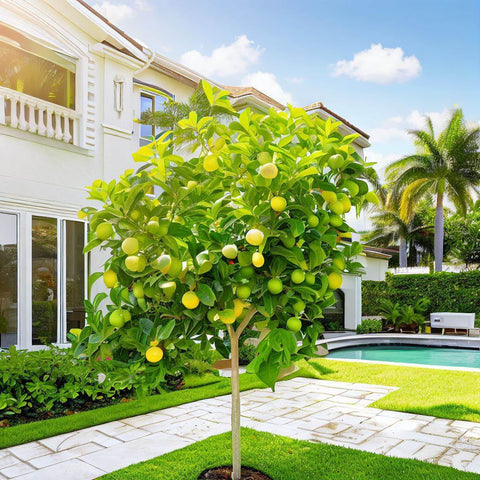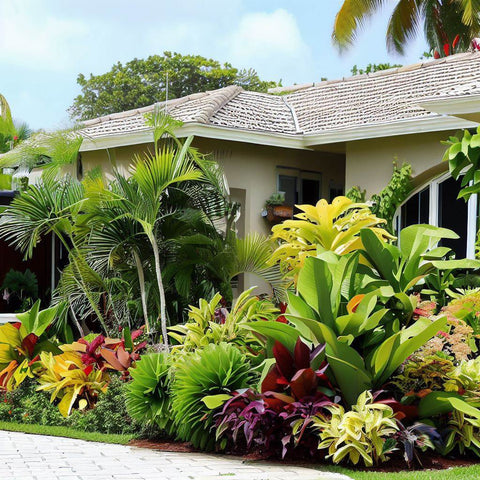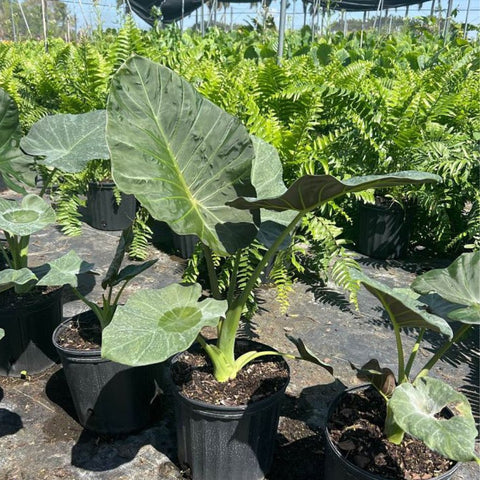Spring Gardening Tips for Zone 8
Introduction
Unpacking Zone 8: A Gardener's Delight
In the world of gardening, understanding your USDA Hardiness Zone is akin to knowing the recipe before cooking a scrumptious meal. Zone 8 is renowned for its moderate climate and extended growing season, making it a paradise for gardeners and plant enthusiasts alike. Located in parts of the Southeastern United States, parts of the Pacific Northwest, and the Western Trans-Pecos area, Zone 8 boasts average minimum winter temperatures between 10 and 20 degrees Fahrenheit. It creates an ideal environment for a plethora of plants, including many of our favorites here at Plantology.The Symphony of Spring
Spring in Zone 8 is more than just a season; it's the canvas upon which your year's gardening plan begins to unfold. With its warm days and cool nights, it's the perfect time to cultivate a thriving garden. Did you know? Planting in spring gives your plants a head start, taking full advantage of the lengthening daylight hours. Spring is not just about renewal; it's about setting the stage for a prosperous, blooming garden year-round.
 Understanding Zone 8 Climate
Understanding Zone 8 Climate
Zone 8 Climate Characteristics
Gardening isn't just about placing seeds into the soil; it's about understanding the intricate dance between climate and plant life. Zone 8 is characterized by a mild climate, avoiding the harsh extremes of both the searing summer sun and icy winter frost. The average last frost date falls between March 15th and April 15th, while the first frost date is generally around November 15th.The Impact on Plant Choices
Understanding these dates is crucial for planning when to plant, what to plant, and how to care for your garden. The temperate climate means you can select a wide range of plants, from tropical to more temperate species, ensuring your garden is vibrant and diverse. For ideas on what to plant, visit our collection of palms and agaves, perfect for Zone 8's climate.Planning Your Spring Garden
Mapping Your Garden Layout
Before you jump into the exhilarating act of planting, mapping out your garden is pivotal. Consider the following in your garden design:Sunlight and Shade
Identify areas in your garden that receive full sun, partial shade, and full shade. Select plants that are specifically suited to these conditions. Our Agave Blue (link) thrives in full sun and is highly drought-resistant, making it an excellent choice for those sun-drenched areas.Soil Quality and Drainage
Zone 8 gardens often have well-draining soil, but it's always best to test yours. Amend your garden soil with organic matter if necessary. Our selection of soil enhancements at Plantology can help improve soil quality, ensuring your plants receive the nutrients they need.
Choosing the Right Plants
Selecting the right blend of perennials, annuals, shrubs, and trees will determine your garden's success. In Zone 8, mix evergreen and deciduous plants for all-year appeal. Consider [Adonidia Palm varieties](https://plantologyusa.com/products/adonidia-palm-double) for a touch of the tropics in your backyard.Soil Preparation and Maintenance
Importance of Quality Soil
Soil is the lifeblood of any garden. In Zone 8, preparing your soil before the planting phase is paramount. Begin by clearing away weeds and debris, and then turning the soil to improve aeration.Nutrient Enhancement
Bolster your soil's fertility with compost or well-balanced organic fertilizers. This enhances its structure, promotes beneficial microbial activity, and boosts plant growth. Check out Plantology's organic fertilizer options for sustainable soil enrichment.Mulching for a Healthy Garden
Mulching serves as a protective shield for your garden. It helps conserve moisture, suppress weeds, and maintain soil temperature. Use organic mulch such as shredded leaves or bark to keep conditions optimal for plant roots.Implementing Effective Watering Strategies
Watering Techniques in Zone 8
Effective watering techniques in Zone 8 require a balance. While the area is not too arid, it's essential to establish a consistent watering schedule to support new and established plants.
 Utilizing Drip Irrigation
Utilizing Drip Irrigation
Consider installing a drip irrigation system. It conserves water by delivering it directly to the plant roots and reduces evaporation. This method is particularly effective for gardens with significant plant diversity.
Watering Requirements for Different Plants
Different plants have varying water needs. Tropical plants such as our [Alexander Palm](https://plantologyusa.com/products/alexander-palm) thrive with regular watering, while succulents like [Agave Caribbean](https://plantologyusa.com/products/agave-caribbean-agave-angustifolia) require far less.Pest and Weed Control in Spring
Managing Common Zone 8 Pests
Spring awakens not just plants but pests as well. In Zone 8, keep an eye out for common nuisances like aphids, caterpillars, and beetles. Early identification and organic pest control methods are critical for a healthy garden.Organic Pest Control
Utilize organic solutions like neem oil sprays or introduce beneficial insects that prey on harmful species. Plantology offers a range of eco-friendly pest control products that can be safely used without harming your garden’s ecosystem.Weed Management Strategies
Prevent weeds from taking over your garden by implementing effective strategies. Regularly remove young weeds, use landscape fabric as a barrier, and apply organic mulch. These tactics help keep the balance in your garden and allow your desired plants to flourish.
Pruning and Maintenance Routines
The Role of Pruning in Plant Health
Pruning removes dead or diseased branches, promoting healthier growth and enhancing the plant's shape. Focus on removing any winter damage as the plants initiate new growth with the spring warmth.Best Pruning Practices
Ensure your tools are sharp and clean to make precise cuts and prevent disease spread. Remove crossing branches and thin out dense areas to allow sunlight penetration and airflow.Creating a Seasonal Garden Care Schedule
A structured schedule for tasks such as watering, fertilizing, and pest management is essential. Break it down by weeks and adjust based on plant species in your garden. Regular maintenance is key to preventing issues and ensuring your garden thrives throughout the year.Conclusion
The Joys of Spring Gardening in Zone 8
Gardening in Zone 8 during spring is a thrilling journey and a rewarding endeavor. By understanding the climate, choosing the right plants, and maintaining diligent care, you'll witness your garden flourish into a vibrant masterpiece.Getting Started with Plantology
At Plantology, we believe every garden tells a story, and we’re here to help you tell yours. Explore our diverse plant collections tailored for Zone 8’s unique climate by visiting [Plantology's website](https://plantologyusa.com/). Whether you’re planting palms or agaves, our products and expert advice will guide your gardening journey.
Call to Action
Ready to transform your garden this spring? Discover the joy of gardening with our premium selections like the majestic [Adonidia Palm Double](https://plantologyusa.com/products/adonidia-palm-double) and the elegant [Agapanthus Lily of the Nile Blue](https://plantologyusa.com/products/agapanthus-lily-of-the-nile-blue). Plantology is your partner in cultivating beauty one plant at a time. With the strategies above, we hope your Zone 8 garden will be bountiful and beautiful, bringing you peace and satisfaction throughout the season and beyond. Happy gardening!Diving Deeper into Plant Selection for Zone 8
Flowering Plants for a Colorful Palette
The allure of a Zone 8 garden lies not only in its diversity but in the vibrant colors that emerge with each bloom. Consider planting perennials like the Black-eyed Susan (Rudbeckia) for a splash of gold, or the Shasta Daisy (Leucanthemum x superbum) for a timeless white accent. Both of these perennials are hardy, requiring minimal maintenance once established, and bloom profusely throughout the spring and summer months.Annuals for Seasonal Brilliance
To add seasonal flair, incorporate annuals like Zinnias and Marigolds. Zinnias are available in a range of colors from bold reds to soft pastels, thriving with full sunlight and minimal water once acclimated. Marigolds, with their pest-repelling properties, serve a dual purpose, offering golden blooms while protecting your vegetable patch from aphids and nematodes.
Edible Gardening: Culinary Delights from Your Backyard
Zone 8's climate is optimal for cultivating a kitchen garden ripe with herbs and vegetables. Start with easy-to-grow herbs such as Rosemary and Basil. Rosemary's hardy nature makes it a perennial favorite, providing perennial greenery along with aromatic leaves year-round. Basil, with its abundant foliage, complements your culinary endeavors by enhancing the flavors of salads, pizzas, and pastas.Vegetable Selection for Spring Planting
Among vegetables, opt for fast-growing greens like spinach or lettuce that can be sowed directly into the garden after the last frost. Both thrive in the cool temperatures of spring and can be harvested multiple times throughout the season. For a root crop, try radishes which can be ready to harvest in a mere 25 days.Creating a Sustainable and Biodiverse Garden
Integrating Native Plants
Native plants play a crucial role in maintaining biodiversity and sustainability in your garden. They support local wildlife, including pollinators like bees and butterflies, which are essential for a thriving ecosystem. Consider incorporating native species such as Coreopsis and Echinacea, which are drought-resistant and require less maintenance, making them ideal for the busy gardener.Building Wildlife Habitats
Beyond flora, think about creating habitats that invite beneficial wildlife to your garden. Birdhouses, bee hotels, and ponds can attract a variety of species that help control pests and propagate your plants. Birds, for example, will appreciate the seeds from your ornamental grasses and sunflowers, while a small pond can encourage amphibians that feast on slugs and other pests.
Permaculture Principles in Zone 8 Gardening
Adopting permaculture principles can further enhance the sustainability of your garden. Design your plantings to create symbiotic relationships, where each plant fulfills a role in the garden ecosystem. Planting nitrogen-fixing legumes like beans near nutrient-hungry leafy greens supports nutrient cycling, reducing the need for additional fertilizers. Consider the use of swales for irrigation, which capture rainwater and guide it to your plants naturally.Advanced Soil Health Techniques for the Avid Gardener
Soil pH and Microbial Activity
Investigate the pH levels of your garden soil, as a balanced pH can significantly influence plant health. Zone 8 typically favors a slightly acidic to neutral pH range, perfect for most garden plants. Alter soil pH as needed with amendments like lime to raise pH or sulfur to lower it. Prioritize enhancing microbial activity by introducing earthworms or incorporating biochar into your soil mix; these initiatives invite beneficial microorganisms that break down organic matter and improve soil structure.Composting for Nutrient-Rich Soil
Composting is another effective method to enrich your soil, recycle organic waste, and minimize environmental impact. Start a compost pile with layers of green waste (like vegetable scraps) and brown waste (like dried leaves). Turn the pile regularly to aerate and accelerate the decomposition process, yielding a nutrient-rich humus that can be integrated back into your garden beds to promote robust plant growth.
Irrigation Technology and Water Conservation
Automated Irrigation Systems
Investing in an automated irrigation system adapted for Zone 8's climate can yield time savings and resource conservation. Consider linking your system to a weather station that adjusts watering schedules according to current conditions, ensuring your plants receive enough moisture without excess. Smart irrigation controllers can help prevent over-watering, preserving water during dry spells while providing consistency throughout the growing season.Rainwater Harvesting
Implement a rainwater harvesting setup as part of your conservation strategy. Collecting rainwater from roofs into barrels not only reduces water usage but offers a chlorine-free watering option that's favorable for plant health. Install a simple gutter system that directs water into storage barrels and incorporates an overflow function to manage excess rainfall efficiently.Embracing the Unpredictability of Weather
Frost and Heat Management
Though Zone 8 boasts a moderate climate, unexpected weather can challenge your gardening efforts. Prepare for sudden frost by keeping frost blankets on hand to protect tender seedlings or sensitive plants during cold snaps. On the reverse, anticipate early heat waves by ensuring proper mulch coverage and considering shade structures, which can mitigate temperature spikes and prevent moisture loss.
Weather-Based Planning
Incorporate weather forecasts into your gardening plans. Utilize resources like almanacs or digital forecasting apps to anticipate climate trends and adjust your activities accordingly. For instance, schedule pruning or fertilization sessions when mild, dry conditions are expected, reducing plant stress and maximizing the effectiveness of your efforts.Gardening as a Community Experience
Engaging with Local Garden Clubs and Workshops
Gardening becomes all the more enjoyable when shared with community members, exchanging knowledge and experiences. Join local garden clubs or attend workshops focusing on Zone 8 gardening, where you can swap plant cuttings, tips, and stories with fellow enthusiasts. These gatherings often offer unique insights into regional challenges and solutions, enriching your gardening narrative.Organizing or Participating in Community Gardens
If space is limited, consider participating in a community garden. These shared spaces provide an excellent opportunity to gain hands-on experience with different plants while fostering community relationships. Additionally, community gardens often feature educational events and collaborative projects, inspiring innovative approaches to common gardening challenges.Nurturing Your Gardening Passion Year-Round
Seasonal Transitions and Garden Planning
As spring fades into summer, continue to adapt your garden plan to the seasonal transitions. Prepare for the hotter months by shifting plantings to accommodate heat-tolerant varieties and ensure your irrigation and shade systems are operational. Maintain a garden journal, documenting successes, challenges, and seasonal shifts to refine your approach with each passing year.






























Comments (0)
There are no comments for this article. Be the first one to leave a message!